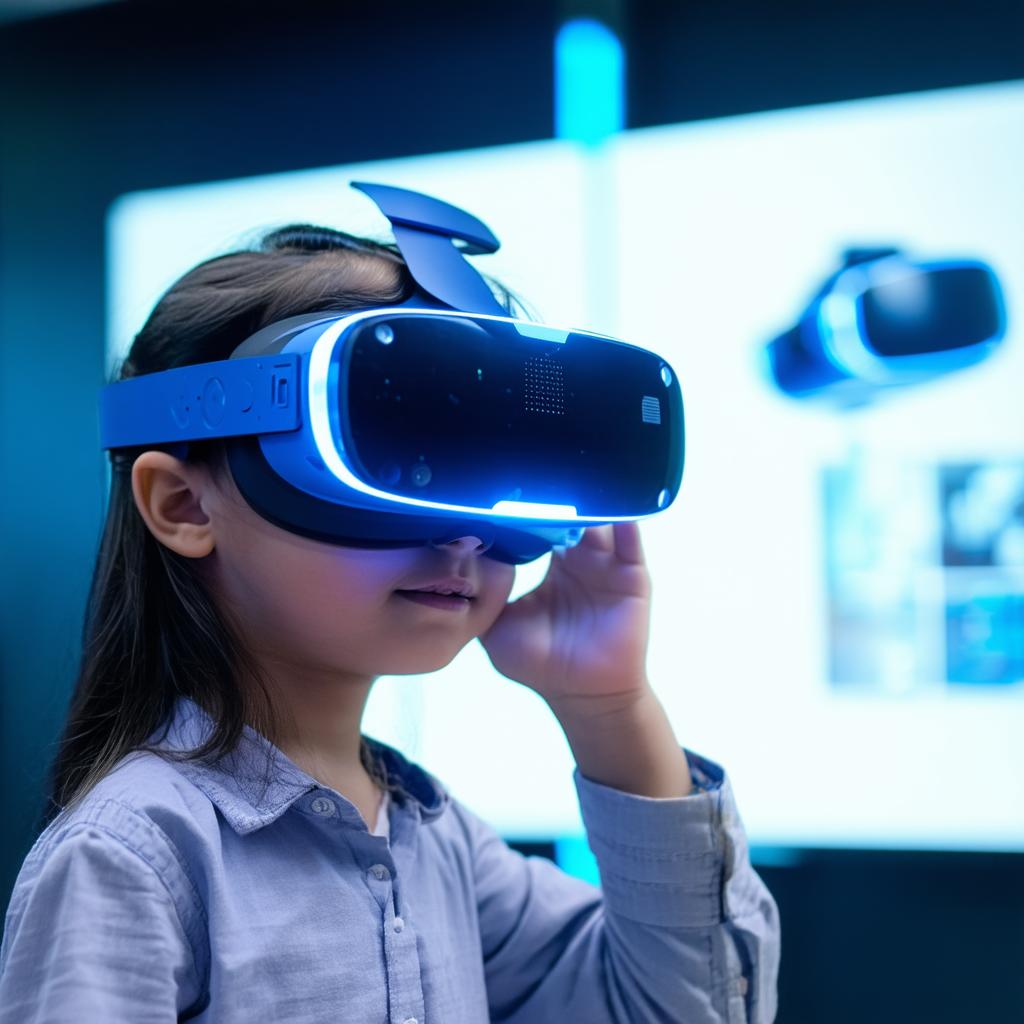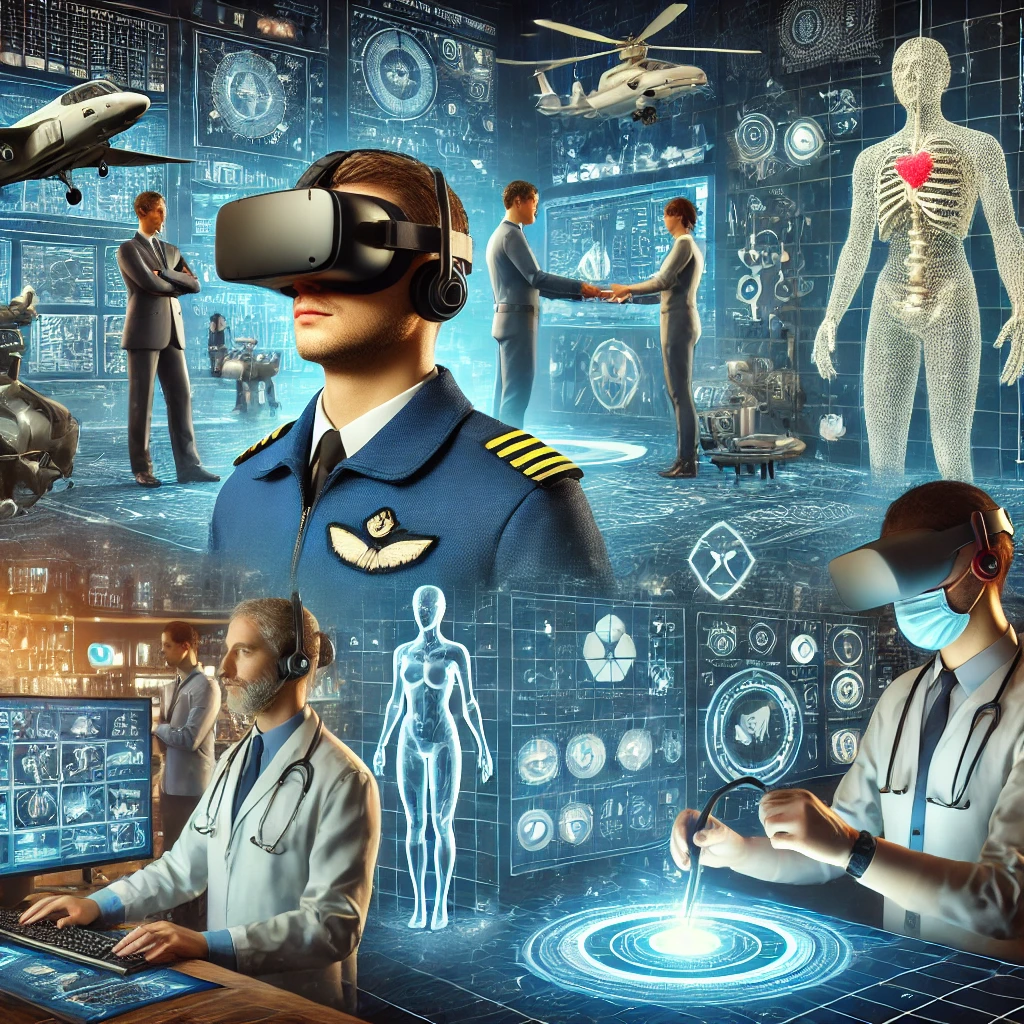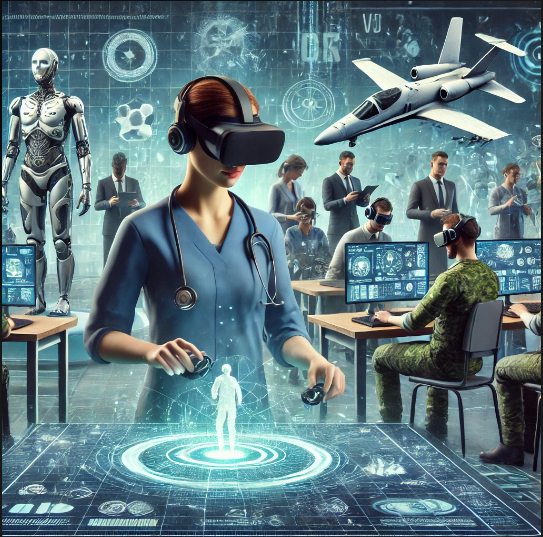Introduction
In today’s fast-paced digital era, technological advancements have revolutionized the way we acquire skills. One of the most promising innovations in this space is Virtual Reality (VR). Once confined to gaming and entertainment, VR has now emerged as a powerful tool for skill development across various industries. From medical training to engineering, military exercises to corporate training, VR is redefining how individuals and professionals enhance their expertise. This article explores how VR is transforming skill development, its applications, advantages, challenges, and the future of this revolutionary technology.
Understanding Virtual Reality in Skill Development
Virtual Reality (VR) is a computer-generated simulation that allows users to interact with a three-dimensional environment in an immersive and lifelike manner. It provides real-time experiences that replicate real-world scenarios, enabling learners to develop and refine their skills in a safe, controlled, and engaging environment.
VR-based training incorporates interactive simulations, haptic feedback, AI-driven avatars, and realistic scenarios that enable learners to practice skills without the risks associated with real-world training.

Applications of Virtual Reality in Skill Development
1. Healthcare and Medical Training
One of the most impactful applications of VR is in the healthcare sector. Medical professionals, including doctors, nurses, and surgeons, can practice complex procedures using VR simulations before performing them on real patients. Some key areas include:
- Surgical Training: VR provides a risk-free environment where medical students and surgeons can practice surgeries multiple times.
- Emergency Response Training: VR enables doctors and paramedics to train for emergencies like cardiac arrests, trauma cases, and patient resuscitation.
- Psychological and Therapy Training: VR is used in cognitive behavioral therapy (CBT) and treating post-traumatic stress disorder (PTSD) through controlled exposure therapy.
2. Engineering and Manufacturing
VR has transformed training programs in engineering and manufacturing by allowing employees to work in virtual factory setups and practice handling machinery. Key applications include:
- Assembly Line Training: Workers can train on VR-based assembly lines before working on actual production units.
- Maintenance and Repairs: Technicians can practice troubleshooting and repairing complex equipment through VR simulations.
- Workplace Safety Training: VR allows employees to experience hazardous situations (such as fire accidents or gas leaks) and learn safety protocols without real-world risks.
3. Aviation and Aerospace
VR has revolutionized pilot training, offering cost-effective and risk-free flight simulations. Some applications include:
- Pilot Training: Aspiring pilots can practice takeoffs, landings, and emergency maneuvers in a simulated cockpit.
- Aircraft Maintenance: Engineers and technicians can learn how to inspect and repair aircraft components through interactive VR modules.
4. Military and Defense Training
Military forces worldwide use VR for combat training, mission planning, and tactical simulations. Benefits include:
- Combat Simulations: Soldiers can engage in battlefield scenarios, urban warfare, and hostage rescue missions.
- Weapons Training: VR-based firearm training allows soldiers to master weapon handling and marksmanship skills.
- Drone Operation Training: With modern warfare shifting towards drone technology, VR enables remote piloting and reconnaissance mission training.
5. Corporate Training and Soft Skills Development
VR is being increasingly used in corporate training programs for employees to develop technical and soft skills. Areas of application include:
- Leadership and Management Training: VR provides realistic role-playing scenarios to improve leadership, decision-making, and conflict resolution.
- Public Speaking Training: Users can practice speeches in a virtual auditorium with AI-driven audience reactions.
- Customer Service Training: Employees can engage in virtual customer interactions, learning how to handle complaints and provide superior service.
6. Education and Learning
Educational institutions are adopting VR-based learning environments to make education more engaging and effective. Some key applications include:
- Virtual Laboratories: Students can perform chemistry, physics, or biology experiments in VR labs without the need for physical resources.
- Historical and Cultural Exploration: VR enables students to explore historical sites and museums from anywhere in the world.
- STEM Learning: Complex scientific concepts are simplified using immersive VR experiences.
7. Vocational Training and Skill-Based Professions
VR plays a vital role in vocational training, helping individuals acquire practical skills in fields like:
- Automobile Repair: Trainees can practice vehicle maintenance and engine repairs in a simulated workshop.
- Hospitality and Culinary Arts: VR enables aspiring chefs and hotel staff to practice cooking techniques and customer service interactions.
- Construction and Architecture: Workers can train in VR-based construction sites, learning about blueprint reading, safety protocols, and equipment handling.

Advantages of VR in Skill Development
1. Immersive and Interactive Learning
Unlike traditional training methods, VR offers a fully immersive experience, making learning more engaging, enjoyable, and effective.
2. Safe and Risk-Free Environment
VR eliminates real-world risks, allowing learners to practice skills without fear of injuries or costly mistakes.
3. Cost-Effective Training Solution
Training in VR reduces costs associated with physical equipment, travel, and logistics, making it an affordable alternative to conventional training.
4. Personalized Learning Experiences
VR allows learners to progress at their own pace, providing customized learning modules tailored to individual needs.
5. Real-Time Feedback and Performance Analysis
VR-based training platforms provide instant feedback, helping learners identify mistakes and improve their skills in real-time.
Challenges and Limitations of VR in Skill Development
1. High Initial Investment
Setting up VR training infrastructure requires substantial investment in hardware, software, and content development, making it expensive for some organizations.
2. Limited Awareness and Adoption
Many industries are still hesitant to adopt VR due to lack of awareness, resistance to change, and skepticism about its effectiveness.
3. Technical Limitations and Accessibility
VR requires high-performance computing power, and not all learners have access to VR headsets or compatible devices, limiting its widespread adoption.
4. Motion Sickness and Health Concerns
Some users experience motion sickness, dizziness, and eye strain while using VR for extended periods, which can affect learning efficiency.
5. Need for Continuous Content Updates
VR-based training modules need regular updates and maintenance to keep pace with evolving technologies and industry standards.

The Future of VR in Skill Development
Despite its challenges, Virtual Reality is set to become a mainstream tool for skill development. Some promising future trends include:
1. Integration of AI and Machine Learning
VR training platforms will incorporate AI-driven adaptive learning to personalize training experiences based on user performance.
2. Expansion of VR-Based Online Learning
As remote learning gains traction, VR will be increasingly integrated into e-learning platforms, providing immersive virtual classrooms.
3. Improved Accessibility and Affordability
With advancements in hardware and software, VR technology will become more affordable and accessible, expanding its reach to a broader audience.
4. Widespread Adoption in Workforce Development
Governments and industries will increasingly invest in VR training programs to bridge the skill gap and enhance workforce productivity.
Conclusion
Virtual Reality is transforming skill development by providing realistic, engaging, and risk-free learning experiences. From healthcare and aviation to corporate training and vocational skills, VR has the potential to redefine education and professional development. While challenges remain, ongoing technological advancements and growing adoption will ensure that VR becomes an indispensable tool for the future of learning and skill enhancement.




